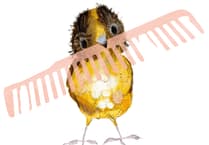A new study has shone a light on the countryside around Selborne – and shown wildlife there is not doing so badly after all.
The survey is the most comprehensive since Gilbert White’s studies that culminated in his 1789 book The Natural History of Selborne.
White was a pioneering naturalist who transformed the way people looked at the natural world and influenced both Charles Darwin and David Attenborough.
The report, called Farming in Partnership with Nature – A New Natural History of Selborne, was unveiled at Gilbert White’s House and Gardens in Selborne on Monday and has been produced by the Selborne Landscape Partnership (SLP).
The SLP has existed for almost ten years and comprises 30 farmers and land managers working together to create a joined-up network of wildlife habitat and promote nature-friendly food production.
Data was collected over five years by volunteers who collated 10,000 species records in the SLP’s 5,600 hectares, much of which is within the South Downs National Park.
The study found 114 bird species; White recorded 120 over several decades across a much wider area. Of these, 88 – including the swift, swallow, barn owl, linnet and grey partridge – were also recorded almost 250 years ago. Some species have been lost but new ones have appeared.
Lead author Debbie Miller said: “We hear a lot of negativity about the state of Britain’s biodiversity, so it’s nice to share some really positive news that wildlife is flourishing on farms here in the Selborne Landscape Partnership.
“It’s thriving because the area is being managed sensitively to retain and restore a range of habitats for farmland wildlife, creating greater connectivity across farm boundaries.
“In this commercially-farmed landscape, farmers locally have worked really hard to create spaces for nature to thrive – collectively sharing skills and knowledge to better manage their land for wildlife.
“I’m extremely proud of what the SLP farmers and volunteers have achieved, and I hope these achievements will encourage and motivate others – just as Gilbert White’s legacy continues to inspire the group.”




